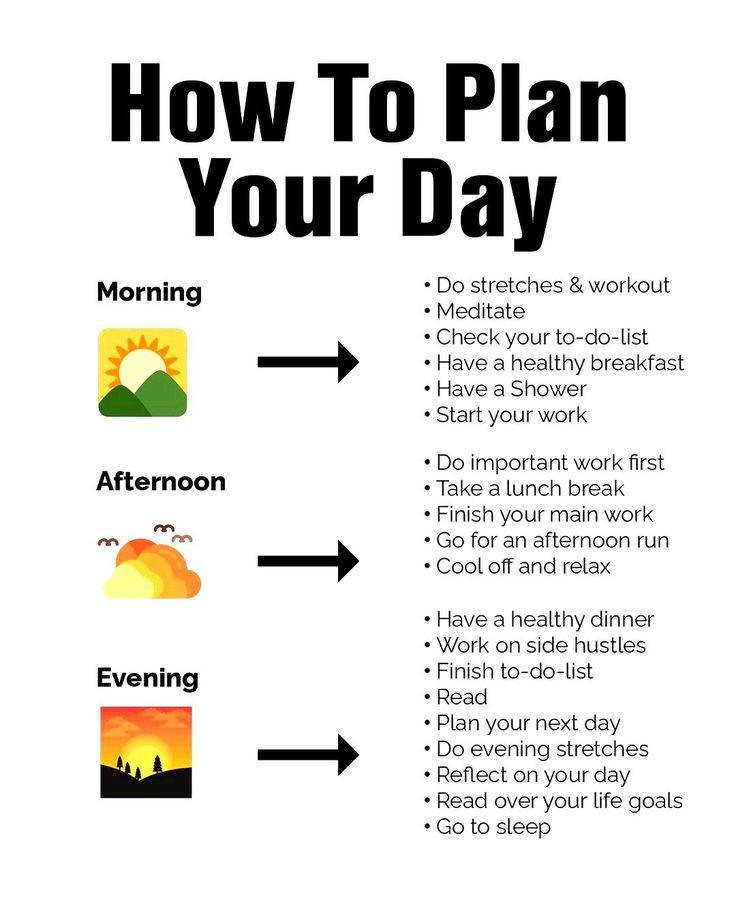How to Plan Your Day:
A Guide to Productive and Balanced Days
Planning your day is one of the most effective strategies for managing time and achieving goals. Whether you're a student, a professional, or managing a household, a well-structured plan can help you stay organized, reduce stress, and maximize productivity. Here’s a step-by-step guide on how to plan your day effectively.
---
1. Start with Your Goals in Mind
Begin by identifying your daily, weekly, or long-term goals. Knowing what you want to achieve will help you prioritize your day’s tasks effectively. Goals provide direction and purpose and help ensure that your day’s activities align with your bigger picture.
Set SMART goals: Ensure your goals are Specific, Measurable, Achievable, Relevant, and Time-bound.
Break down big goals into manageable tasks: This will make larger goals seem less overwhelming.
---
2. Prioritize Your Tasks
Not all tasks hold the same value or urgency. Use a prioritization method to determine which tasks need to be completed first and which can wait.
The Eisenhower Matrix: Divide tasks into four categories:
Urgent and important
Important but not urgent
Urgent but not important
Neither urgent nor important
Top Three Tasks: Identify the three most important tasks you want to accomplish that day. Completing these will ensure you make meaningful progress, even if other tasks get delayed.
---
3. Plan Your Day the Night Before
One of the best ways to start your day on a productive note is to plan it the night before. Take 5–10 minutes in the evening to write down your priorities and organize your tasks. Planning ahead can prevent you from wasting time in the morning trying to figure out what needs to be done.
Review tomorrow’s schedule: Check for any meetings, deadlines, or important events.
List out tasks: Write down specific tasks and allocate time for each, even if it’s just a rough estimate.
---
4. Allocate Time Blocks for Tasks
Time blocking is an effective method to ensure tasks get the attention they need. By assigning specific time slots for each activity, you reduce the chance of distractions and multitasking.
Set aside dedicated time: Block out time for each task, especially important ones, to maintain focus and productivity.
Include buffer time: Allow for breaks between blocks, as well as buffer time for unexpected interruptions.
---
5. Embrace the Power of Routine
Establishing a routine can increase productivity by reducing decision fatigue. The fewer decisions you need to make about minor tasks, the more mental energy you’ll have for important tasks.
Start with a morning routine: Incorporate habits like exercise, meditation, or reading to set a positive tone for the day.
Create a wind-down routine: This could include reviewing the day, planning for tomorrow, and relaxing activities that help you transition into a restful evening.
---
6. Limit Distractions
Distractions can derail even the best plans. Recognize what commonly interrupts your work and take steps to minimize those distractions.
Turn off notifications: Silence your phone or use ‘Do Not Disturb’ mode to minimize disruptions.
Designate focused work areas: Find a place where you can concentrate without constant interruptions.
Use productivity tools: Apps like Focus@Will, Pomodoro timers, or noise-canceling headphones can help you stay on track.
---
7. Schedule Breaks
Research shows that taking regular breaks can help boost productivity and prevent burnout. Breaks are essential for maintaining mental clarity and focus throughout the day.
Try the Pomodoro Technique: Work for 25 minutes, then take a 5-minute break. After four “Pomodoros,†take a longer break.
Move around: Stand up, stretch, or take a short walk to recharge and reduce the risk of fatigue.
---
8. Reflect and Adjust
At the end of each day, take a few minutes to review what you accomplished and what you can improve. Regular reflection will help you identify patterns in your productivity and adjust your planning strategies accordingly.
Note what worked and what didn’t: Did certain tasks take longer than expected? Were there any unnecessary distractions?
Refine your approach: Make adjustments based on what you’ve learned to create a more productive plan for the next day.
---
9. Make Time for Yourself
A well-planned day should include time for self-care. Without time for relaxation, hobbies, or social connections, burnout can creep in quickly.
Incorporate downtime: Schedule moments of relaxation, especially after completing challenging tasks.
Nourish yourself: Include healthy meals, physical activity, and mental breaks to sustain your energy throughout the day.
---
10. Stay Flexible and Adaptable
Even with the best plan, unexpected events can arise. Stay open to change, and don’t be too hard on yourself if you can’t accomplish everything.
Re-evaluate your priorities: If something urgent comes up, determine whether it’s worth reshuffling your priorities.
Give yourself grace: Planning is a tool for guiding your day, not a strict rulebook. It’s okay if things don’t go exactly as planned.
Effective day planning is a powerful tool that can lead to greater productivity, reduced stress, and a balanced lifestyle. Remember, planning is personal, so feel free to adjust these tips to fit your unique needs. With a clear approach to organizing your day, you’ll feel more in control and capable of handling whatever comes your way.
Thanks for reading 📚
MOÃSE


